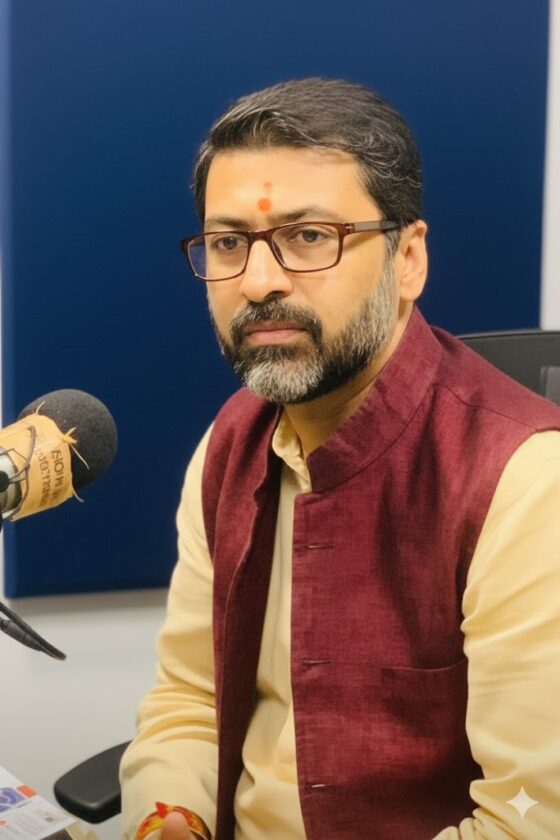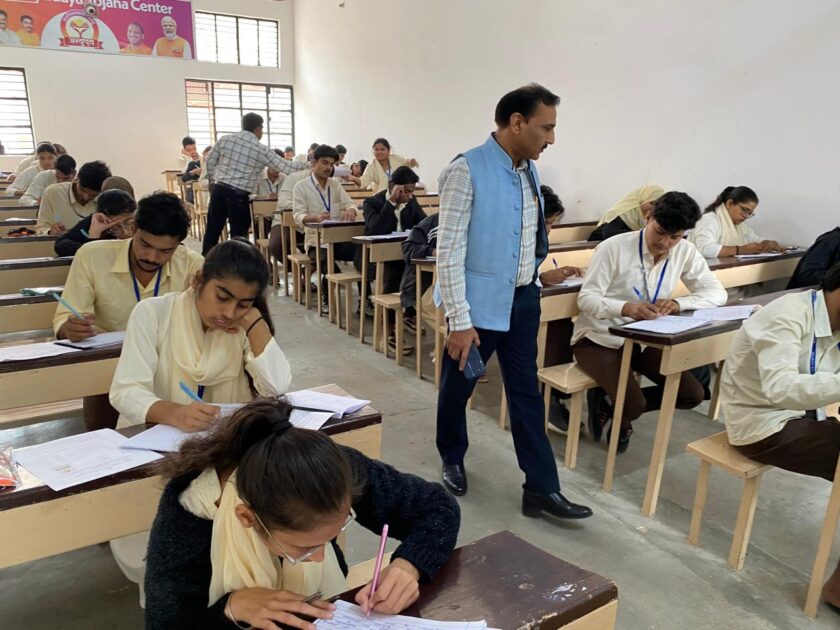Lucknow: A special lecture was organized by the Department of Management Studies at Babasaheb Bhimrao Ambedkar University. The program featured Prof. Vijita Singh Agrawal, Director of International Affairs, Guru Gobind Singh Indraprastha University, New Delhi, as the Chief Guest and Speaker. Prof. Amit Kumar Singh, Dean of the School of Management and Commerce, and Dr. Taruna, the Program Coordinator were present on this occasion. The event commenced with a floral tribute to the statue of Babasaheb Bhimrao Ambedkar, lighting of the lamp, and the university anthem. Dr. Taruna welcomed all attendees and briefed them about the objectives and structure of the program.
The Chief Guest and Speaker, Prof. Vijita Singh Agrawal, presented her insightful views on the topic ‘From Indus Ports to Roman Markets: India’s Ancient Trade Odyssey.’ In her address, Prof. Agrawal elaborated on the commercial grandeur of ancient India, maritime routes, the ports of the Indus Civilization, and the trade relations between India and the Roman Empire. She highlighted India’s strong economic and cultural heritage through archaeological evidence, ancient records, and historical trade sources. She emphasized that India’s role in history was not limited to civilization and culture but extended to being a central hub of global trade. While familiarizing students with the Indus Valley Civilization, Mesopotamia, and other ancient civilizations, she discussed the trade of ivory beads from the Indus Civilization to Mesopotamia and explained the reasons behind Vasco da Gama’s arrival in India. Prof. Agrawal provided a detailed account of India’s ancient trade system, illustrating that India has historically been a center of global commerce. She described how India’s maritime and overland trade from the coastal towns of the Indus Valley Civilization to the Roman Empire was well-organized and robust, exporting spices, textiles, gems, and metals to different parts of the world. She gave examples of India’s ancient textile industry, particularly cotton and silk, which were renowned globally for their quality and beauty. She also discussed Indo-Roman trade, the Silk Route, and India-Greek historical relations.
Using the PESTEL model (Political, Economic, Social, Technological, Environmental, Legal), she explained why India was referred to as the ‘Golden Bird.’ Prof. Agrawal clarified the historical background, perspectives, and differences between Ayurvedic and Allopathic medical systems. Connecting the lecture to contemporary relevance, she emphasized that India’s ancient trade history is closely linked to modern initiatives like ‘Make in India’ and ‘Developed India.’ She stated that the indigenous production and export-based economy of ancient India forms the foundation of today’s self-reliant India. She added that by learning from history and integrating traditional trade knowledge with modern technology, India can once again lead global commerce. Encouraging students, she urged India’s youth to draw inspiration from the nation’s ancient scientific, economic, and cultural pride to excel in innovation and entrepreneurship. She highlighted that the idea of self-reliance is not new for India; its roots lie in the country’s ancient trade history. She appealed to students to research India’s glorious past and establish its relevance in modern contexts.

Prof. Amit Kumar Singh shared that the Department of Management Studies will regularly organize such inspirational lectures to deepen students’ understanding of the practical heritage of Indian civilizations.
Dr. Taruna added that India’s history is not only a symbol of economic prosperity but also a testament to its cultural, intellectual, commercial, and technological excellence. She emphasized that the youth of India possess strong energy for knowledge, curiosity, and creativity, and if guided properly, India can once again establish itself as a global leader.
The event concluded with a vote of thanks by Prof. Amit Kumar Singh. The program was attended by faculty members, researchers, and students.





